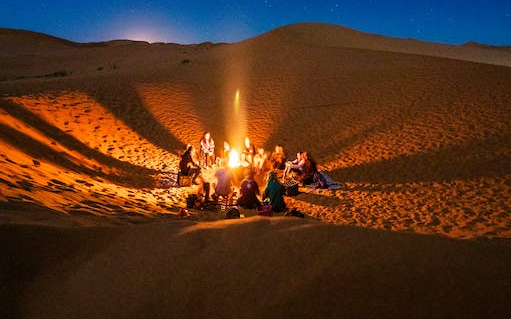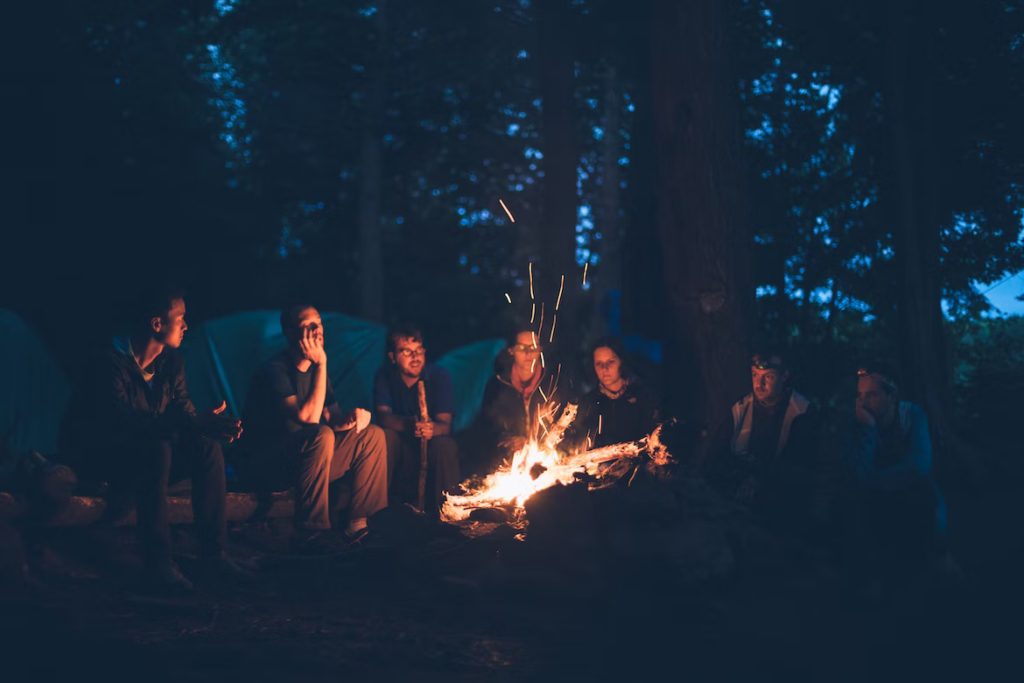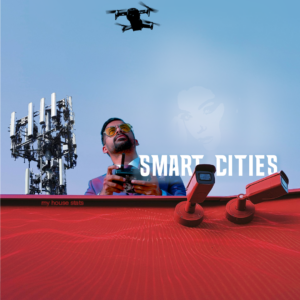Why is Fire Important

Banks are collapsing in the United States and in other countries, train derailments are a regular event, world leaders (who have deadly nuclear bombs) are chirping each other like a heated UFC weigh-in, the US Dollar is losing popularity around the world as more countries join BRICS, and World War 3 is looking like it can happen any minute.
Or this is just another slightly challenging time in history we’ll look back at and laugh about.
Do not light one if you live in a city or town where fires are not allowed.
Praise God. Let’s learn how to light a fire. Why? So you don’t die. Die of what? From freezing during night time or cold temperature. So you can stay warm if it’s cold at night. Oh, and to cook food.
How Do I Light a Fire?
There are many ways to light a fire. The common methods are by using matches or lighters, sparking a fire using a ferro rod, using a magnifying glass, and the most universal method of using a friction fire.
There are some key concepts that must be known in order to successfully light a fire.
Fire Requirements

Fire needs three things to form. Heat, oxygen, and fuel. This is known as the fire triangle. If any of these components are absent, the fire does not burn.
Oxygen
Oxygen is all around us. To remove this from a fire, simply use something like water or dirt near the fire.
Heat
Heat is another word for warmth, usually made from the presence of heat energy as a result of atoms moving at high speeds.
Fuel
Fuel can be anything that burns. One of the best fuel sources is wood, which comes from trees. Unless you’re in a desert or a city that doesn’t respect nature, wood should be abundant near you. Other examples are live or dead trees, dead material on the ground, or dead grass.
Tinder
Fire needs tinder to get the fire going. No, not the dating app. Use your family and friends to meet people.
Tinder is where a concentration of thin, fine, combustible, flammable, and preferably fluffy material is bunched together to start the initial flame before being placed near increasingly larger fuel sources. For example, increasing sizes of wood logs. It is important to slowly increase the size of fuel because adding fuel that’s too big may not ignite. This will cause the flame to fan out and stop.
Good tinder materials are dead grass, dead wood, dead leaves, Spanish moss, wood shavings, cotton balls, and paper.
Kindling
Kindling is a set of easily combustible or flammable small sticks or twigs used to start a fire.
Ways to Light That Fire
Matches or a Lighter

This will be the easiest method for most people. However, it still can be tricky because of the wind constantly fanning your flame out. So much fun.
All you need to do is block the wind with your back while kneeling to make things easier.
Strike the match or flick the lighter to get that flame lit. Once lit, use your other hand to cup the flame and block that wind like Mutombo. Slowly bring the flame to the tinder so that the fast motion doesn’t fan the flame out. And if it’s raining, you’ll need some water proof matches. If you’re inside there’s no need to worry about the flame going out.
Time to get that fire going. Touch the light to a few spots around your tinder so your fire catches. This should happen instantly, causing your kindling to catch fire shortly after.
Light your kindling by gently blowing on your tinder to send the flames toward the kindling. To grow your flame, add more kindling. If your kindling’s still not lit, add more tinder and try again.
Ferro Rod Sparks

Get yourself a ferro rod (its full name is ferrocerium rod). Strikers do come included for some ferro rods. You can get one from most outdoor supply, welding, or online stores. These are great if you’re a newbie at lighting fires. They produce a spark far hotter than one from flint and steel, making it easier for your tinder to catch. Do not mistake this for a fire steel, which is the steel striker used to spark flint.
A striker is a strong item can strike the rod as long as it’s harder than your ferro rod. Good examples are flint, the back of a knife, steel, or glass.
- Put your ferro rod right in front of your tinder. Gotta have your sparks lighting that tinder, am I right? Hold the other end of the rod up using your other hand.
- Rub a sharp side of the striker against the ferro rod. Do this until the tinder starts smoking and enough sparks land in the tinder to start a fire. Hold the striker at a 90-degree angle against the Ferro rod. Use pressure to forcefully scrape up and down against the rod. Then scrape it forcefully up and down against the rod. Do this quickly to produce sparks.
- Gently blow to help the kindling above the tinder catch. You’ll see small sparks catching once the fire is going. These sparks are some of the metal shavings that you scraped off of the Ferro rod that are just now catching.
Using a Magnifying Glass
Take out the search icon in real life, the magnifying glass. This only works while the sun is up and the sky is free of clouds. Simply hold it between the sun and tinder . It’s easy mode if you’re using a glass magnifying glass. Plastic magnifying glasses are hard mode, especially with how easy they get scratched and, consequently, limit how much it focuses the sunlight. So how do I do this?
- Light the tinder on fire by aiming the light circle made from the sun shining through the magnifier. If you’re a pro, move the lens near the tinder until the circle is a quarter inch in diameter. This is done to make that tinder light with ease. Do this for twenty to thirty seconds without moving it so that the tinder starts to smoke.
- Finally, blow on your tinder slowly to light the fire.
Friction Fire
Friction Fire Difficulty

Lighting a friction fire at first will be the most difficult method. It makes use of a fire board, a spindle, and a divot. It requires a lot of work with your arms, especially if your technique is not on point. In addition, setting up the fire board to make it light up is also a bit tricky.
Friction Fire Key Terms
What is a fire board? This is the dried softwood board that you’ll use to create friction with your spindle. It should be around 1⁄2 inch (1.3 cm) thick.
What’s a spindle? A spindle is the stick you’ll use to create friction with the fire board. The spindle will be spun in the fire board’s divot.
What’s a divot? A divot is the small, circular dip in the fire board that will gather the dust and coal that lights the tinder, and then make the fire. It only needs to be about 1⁄4 inch (0.64 cm) deep. Use a knife or sharp rock to carve a small circle that’s the same diameter as the spindle you’ll be using.
Lighting the Friction Fire
- Make a circular divot in the fire board where the spindle will be used.
- Put the spindle in the divot and rub the spindle between your hands while applying pressure. Use your whole hands to make the friction rather than just your palms. The goal by doing this is to make a small dark pilot hole. Your hands will slip downwards on the spindle. When you’re about halfway, bring your hands back to the top of the spindle and continue spinning the spindle.
- Use a sharp knife or stone to cut a clean triangle opening in the middle of the hole created with the spindle. You’ll have to cut completely through the 1⁄2 inch (1.3 cm) fire board. This will let the powder fall as you start the fire.
- Put scrap wood under the fire board and start rubbing the spindle again. This is to catch the dust and coal. Then rub the spindle through your palms until the fire board smokes on its own.
- Take the coal and dust to your tinder and blow it to light your fire.
- The fire board will keep smoking once you set the spindle aside. Remove the fire board slowly so any dust falls to the scrap wood. Take the dust and coal and put it onto the tinder and gently blow the coal and dust to light the tinder. Keep your kindling and fuel wood nearby to make the fire light easily.
Adding Fuel to the Fire Once Lit
Now you’re ready to add that fuel wood to your fire. These should be the size of your wrist. They should start getting lit from the kindling to get your fire going. You can add large logs once the fuel wood catches as a result of having enough oxygen to make heat to burn the large logs. Quite simply, growing a fire is just adding incrementally larger fuel to it. For example, fuel can be tinder, kindling, wood, tree branches, and eventually large logs.
Summary
Ever had to light a fire? If so, why did you do it? Where did you light the fire? How did you light the fire? How was the fire used?
Leave your answer in the comments and be sure to share this article with friends.


